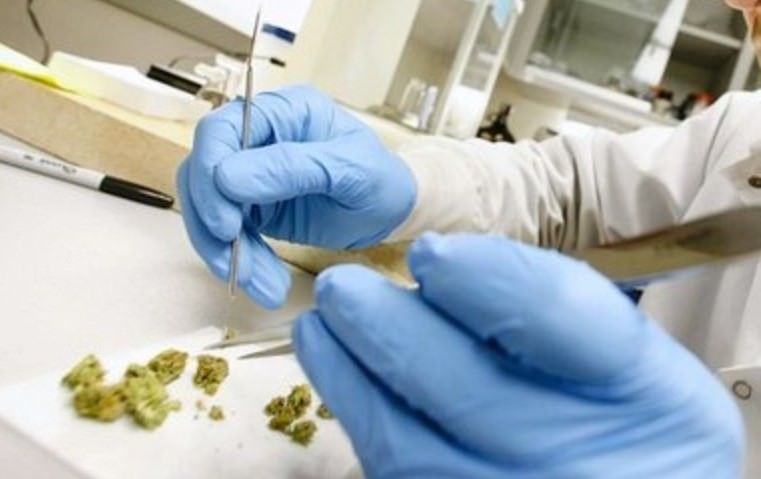 (Editor’s note: This story is part of a recurring series of commentaries from professionals connected to the cannabis industry. Bob Gunn is founder of Seinergy, an energy consulting firm in Seattle.)
(Editor’s note: This story is part of a recurring series of commentaries from professionals connected to the cannabis industry. Bob Gunn is founder of Seinergy, an energy consulting firm in Seattle.)
Cannabis cultivation is an energy-intensive sector.
With the increasing demand and growth in the market, figuring out marijuana grow-lighting efficiency is the key to saving both profit and, more importantly, our planet.
For indoor-grow operations, smart growing strategies that use modern energy-efficiency techniques such as LED lighting systems and centralized heating, ventilation, air conditioning (HVAC) and dehumidification equipment and controls systems can dramatically reduce a growers’ carbon footprint.
The initial investment for LED lighting upgrades or HVAC controls are unsurprisingly quite substantial.
Thankfully, many local utilities have programs in place to reduce the barrier to investment – offering cash-back efficiency rebates to cannabis growers that help make such a significant financial commitment much more manageable.
Simply put, rebates and incentive programs can help growers afford the lighting and HVAC systems they need to operate more efficiently, cut costs and meet state regulations.
However, managing the rebate process can be challenging.
Each state has unique project applications, timelines and criteria and requires substantial documentation, measurement and verification – much like grant writing or complex loan applications.
It’s easy to unknowingly reduce the rebate amount or add time and complexity to the process or disqualify your project all-together.
To help you optimize your rebate program success, here are five common mistakes and how to avoid them:
Mistake 1: Unreasonable cash-flow expectations
Utilities pay rebates for grow lights only after they are installed and operational. Lighting vendors (most often) require payment before manufacturing and shipping lights.
This creates a time and financial gap.
Stay informed with MJBiz Newsletters
MJBiz’s family of newsletters gives cannabis professionals an edge in this rapidly changing industry.
Featured newsletters:
- MJBizDaily: Business news for cannabis leaders in your inbox each morning
- MJBiz Cultivator: Insights for wholesale cannabis growers & vertically integrated businesses
- MJBizCon Buzz: Behind-the-scenes buzz on everything MJBizCon
- MJBiz Retail + Brand: New products, trends and news for cannabis retailers, distributors and marketers
- Hemp Industry Week: Roundup of news from hemp farming to CBD product manufacturing
- And more!
In most cases, you will cover the full price of lights, then wait on shipping, installation and utility inspection and accounting procedures for the check.
Based on our project data of more than 200 grow-light applications, the average time between purchasing lights and receiving a rebate check is 84 days.
It’s 139 days between submitting a rebate application and receiving a check.
Do: Anticipate this cash gap and plan accordingly if using short-term financing. Reply to utility staff promptly – you want to move this process as quickly as possible.
Mistake 2: Miscalculating timelines
Buying lights or inviting utility staff for an inspection too early can set you back. Buying lights too early can disqualify you.
One grower paid for lights before build-out and a new power-service upgrade was complete.
As a result, lights sat in a warehouse and 296 days passed before the grower received a rebate check. Make sure your facility is ready for lights before purchasing them.
Also, your facility needs to be fully functioning before utility staff visits for the final inspection.
Although specific utility requirements vary, this might include having adequate power (such as a new transformer), control systems/timers, tables, HVAC, live plants under lights and an active state cannabis license.
And, most important: Be sure to get preapproval for a rebate early. Not applying before purchase will, in many cases, disqualify your eligibility.
Do: Buy lights after utility preapproval, but only when your facility is ready. Understand utility inspection expectations.
Mistake 3: Misinterpreting baseline
Your energy rebate is determined by the cost and consumption of your efficient lights compared to a standard fixture, known as the baseline.
If you already have lights hanging, these are your baseline.
However, for new canopy, the utility needs a reference point to understand what lights a grower would have reasonably used without a rebate.
This is a rather subjective definition, but the baseline you identify will vastly affect a rebate offer.
To maximize rebates, the cost and wattage gap between the baseline and efficient lights should be as big as possible and without exaggerating.
Do: Use a single-ended, 1,000-watt fixture for the baseline for new flower canopy and ceramic metal halide or fluorescent for veg (vegetative stage) – if these are technologies you might reasonably consider.
Be sure to include the ballast power (typically 5-10%) as well to determine full baseline wattage.
Mistake 4: Inaccurate cost reporting
Figuring out how and what to report for lighting and associated costs can be confusing.
Utilities offer rebates for cannabis lamps on a custom basis where a certain rate for energy savings is paid up to a cost cap.
Inflating costs or underreporting costs can diminish your rebate – be as precise and accurate as possible.
Report what you will pay for lights (not full retail value) and include associated costs when applicable.
For all projects include tax, freight charges and controllers.
Some utilities might account for the cost of special engineering or even an energy-efficiency consultant if you use one.
If you are replacing old lights with efficient ones, include the labor and costs associated with removal and disposal of the old lights or rewiring the room.
If you have a new facility, include only the installation and hardware costs in excess of what you would have spent for standard lights.
There also might be risk to overreporting costs.
If someone is applying for a rebate on your behalf, ensure they are not inflating equipment prices, making you vulnerable to fraud and rebate payback.
And, in some cases, reporting high costs can even lower the overall rebate received.
Do: Get a final bid from your light vendor and report the actual price you will pay for lights. Include other associated costs when appropriate.
Mistake 5: Incorrect hours of use
The number of hours your lights are on each year directly affects rebate calculations. It is important to accurately report the hours your lights are on.
As a cannabis grower, expect to be closely monitored by the utility for two weeks to six months. One client forgot to mention they turn off lights four hours each week for spraying.
Utility staff caught this gap with routine monitoring, and the grower was required to return $3,000 of the rebate.
Do: Think through all aspects of your operations from the perspective of when your lights are in use. Keep veg lights in veg and flower lights in flower. Report all aspects of light use and stick to the plan.
Rebate redemption can be game changing for growers – increasing grow profitably and sustainability.
Avoiding these common snags in the rebate process can improve your success rate and get you in the green.
Bob Gunn can be reached at bob@seinergy.com.
The previous installment of this series is available here.
To be considered for publication as a guest columnist, please submit your request here by filling out our form.





